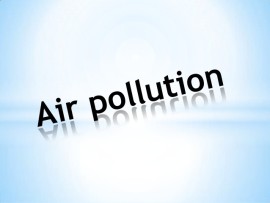- Home
- Editorial
- News
- Practice Guidelines
- Anesthesiology Guidelines
- Cancer Guidelines
- Cardiac Sciences Guidelines
- Critical Care Guidelines
- Dentistry Guidelines
- Dermatology Guidelines
- Diabetes and Endo Guidelines
- Diagnostics Guidelines
- ENT Guidelines
- Featured Practice Guidelines
- Gastroenterology Guidelines
- Geriatrics Guidelines
- Medicine Guidelines
- Nephrology Guidelines
- Neurosciences Guidelines
- Obs and Gynae Guidelines
- Ophthalmology Guidelines
- Orthopaedics Guidelines
- Paediatrics Guidelines
- Psychiatry Guidelines
- Pulmonology Guidelines
- Radiology Guidelines
- Surgery Guidelines
- Urology Guidelines
Air Pollution in India may increase risk of stroke and heart attack

India is affected by high levels of ambient and indoor air pollution. In addition to it, there is a sharp increase in the prevalence of hypertension, diabetes and obesity. The researchers have tried to find the relationship between the two in the present study. Researchers at Barcelona Institute for Global Health (ISGlobal) have found an association between ambient and household air pollution and carotid intima-media thickness (CIMT), a marker of atherosclerosis.
The researchers for the first time explored the relationship of Air Pollution and atherosclerosis in a periurban area in southern India and found that people most exposed to fine particles have a higher CIMT index, which means they are at higher risk of developing cardiovascular diseases such as stroke or heart attack. The study has been published in the International Journal of Epidemiology.
Previous studies indicate that inflammation and atherosclerosis are most likely responsible for the association between long-term exposure to air pollution and cardiovascular disease and mortality. Atherosclerosis is characterised by an accumulation of fat, cholesterol and other substances along the wall of the arteries, and a non-invasive way to identify it is by measuring the thickness of the innermost layers of the carotid artery (CIMT) with ultrasound. To date, studies associating CIMT with air pollution exposure were limited to high-income countries or to moderate levels of air pollution.
Now, the CHAI project team has published a new study that explores such an association in India, a lower-middle-income country with high levels of air pollution. The study was performed with 3,372 participants from a periurban region of Hyderabad, Telangana, in southern India. The research team measured CIMT and estimated exposure to air pollution using an algorithm called land-use regression (LUR) frequently used to predict the number of fine particles (suspended particles with a diameter under 2.5 μm) in high-income countries. The participants also provided information on the type of cooking fuel they used.
The results indicate that high annual exposure to ambient fine particles was associated with a higher CIMT, particularly in men, participants above 40 years of age, or those with cardiometabolic risk factors.
Sixty per cent of participants used biomass cooking fuel. Otavio Ranzani, ISGlobal researcher and first author of the study, explains that "people using biomass fuel for cooking had a higher CIMT, particularly women who cooked in unventilated spaces." In addition, "women had a higher CIMT than men, which could be due to the fact that they spend more time in the kitchen, breathing air polluted by biomass fuel," he says.
Annual average exposure to PM2.5 was 32,7 μg/m3, far above the maximum levels recommended by the WHO (10 μg/m3).
"Our findings highlight the need to perform more studies on air pollution in low- and middle-income countries, since the conclusions may differ considerably from studies in high-income countries due to differences in population characteristics and air pollution levels and sources," adds Cathryn Tonne, ISGlobal researcher and coordinator of the study.
For further reference log on to:
http://dx.doi.org/10.1093/ije/dyz208
Air pollutionCIMT indexheart-attackhigherincreaseindiaInternational Journal of Epidemiologyriskstroke
Source : International Journal of EpidemiologyNext Story
NO DATA FOUND

Disclaimer: This site is primarily intended for healthcare professionals. Any content/information on this website does not replace the advice of medical and/or health professionals and should not be construed as medical/diagnostic advice/endorsement or prescription. Use of this site is subject to our terms of use, privacy policy, advertisement policy. © 2020 Minerva Medical Treatment Pvt Ltd